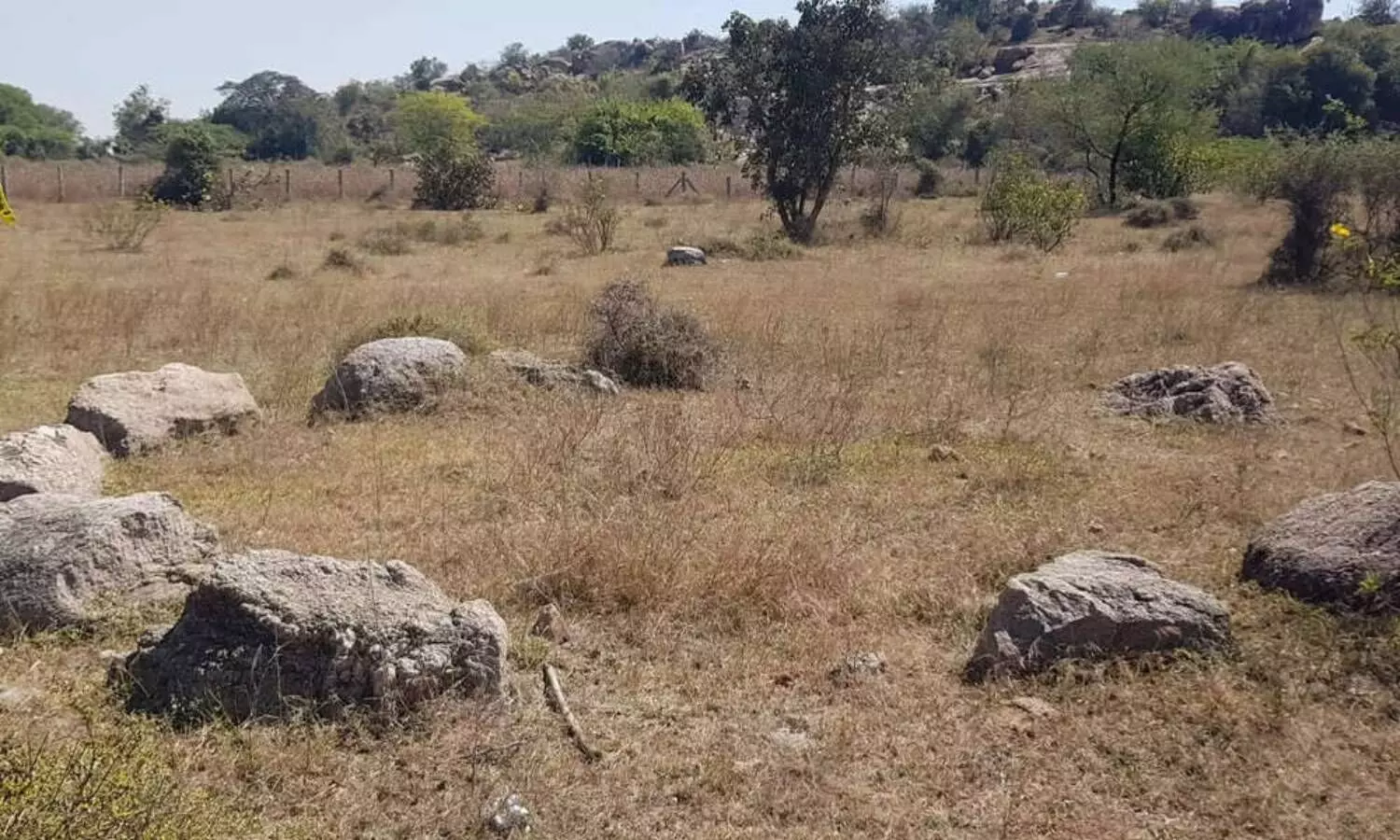Archeological treasure: Iron Age burial structures suffer from neglect at Yadadri
A cluster of burial structures belonging to the Iron Age suffer from neglect at Raghunathapuram village in Yadadri Bhongir district.
By Newsmeter Network
Hyderabad: A cluster of burial structures belonging to the Iron Age suffer from neglect at Raghunathapuram village in Yadadri Bhongir district.
Archaeologist Dr. E. Sivanagireddy and Deccan Heritage Academy Chairman M Vedakumar surveyed the Megalithic burial structures known as Cist burial structures, which are located on either side of the road leading to Ramaswamy Gutta in the village.
These structures, known as 'Rakasigullu' locally, illustrate the burial practices of the Iron Age in which the dead were buried in a stone chamber covered with a huge capstone measuring 4 x 4 meter in dimension and 0.33 meter in thickness, demarcated by a circle of natural boulders placed around them.
Based on the information shared by Kotha Telangana Charitra Brindam, Convenor, Sriramoju Haragopal, the archaeologist conducted a thorough survey on the hill and the surroundings.
Dr. Reddy said only 10 burial structures existed now out of 100 due to active agricultural operations taken up in the area. These structures known as Rakasigullu denote the burial practices of the Iron Age, in which the dead were interred in a stone chamber covered with a huge capstone and demarcated by a circle of natural boulders all around, he added.
Along with him, Vedakumar spotted nearly 20 cup marks on the top side of one of the capstones. He said that these cup-marks bear a lot of astronomical significance. They also noticed grooves of the Neolithic period (4000 BC) on the rear side of the Ramaswamy temple located on the hillock amidst the Deccan Rock formations.
The activists said there were 20 to 25 natural boulders placed in circular form around each burial which are needed to be preserved in their current form. They sensitized the local community on the archaeological and historical significance of the structures and the need to preserve them for posterity.
They made an appeal to the district authorities concerned to notify the burial site immediately and opined that it could be developed as a cultural and archaeological landscape, to be promoted under heritage tourism for the benefit of the tourists frequenting Yadadri temple city and the ancient Jain center at Kolanupaka.